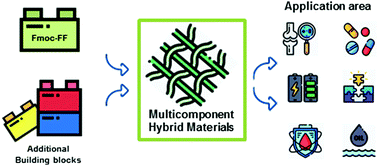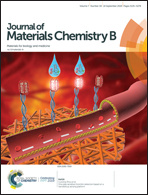Fmoc-diphenylalanine as a suitable building block for the preparation of hybrid materials and their potential applications
Abstract
Due to its capability to self-assemble in self-supporting hydrogels (HG) under physiological conditions, Fmoc-FF is one of the most studied ultra-short peptide. The structural properties of the resulting hydrogel (mechanical rigidity, entanglement of the fibrillary network, and the thickness of the fibers) strictly depend on the experimental conditions used during the preparation. In the past few years, a broad range of applications in different fields, such as biomedical and industrial fields, have been proposed. However, the research on novel materials with enhanced mechanical properties, stability, and biocompatibility has brought about the development of novel Fmoc-FF-based hybrid systems, in which the ultra-short hydrogelator is combined with others entities such as polysaccharides, polymers, peptides, or organic molecules. The structural features and the potential applications of these novel hybrid materials, with particular attention to tissue engineering, drug delivery, and catalysis, are described here. The aim is to give the readers a tool to design new hybrid nanomaterials based on the Fmoc-FF dipeptide hydrogelator, with appropriate properties for specific applications.

- This article is part of the themed collection: Recent Review Articles


 Please wait while we load your content...
Please wait while we load your content...